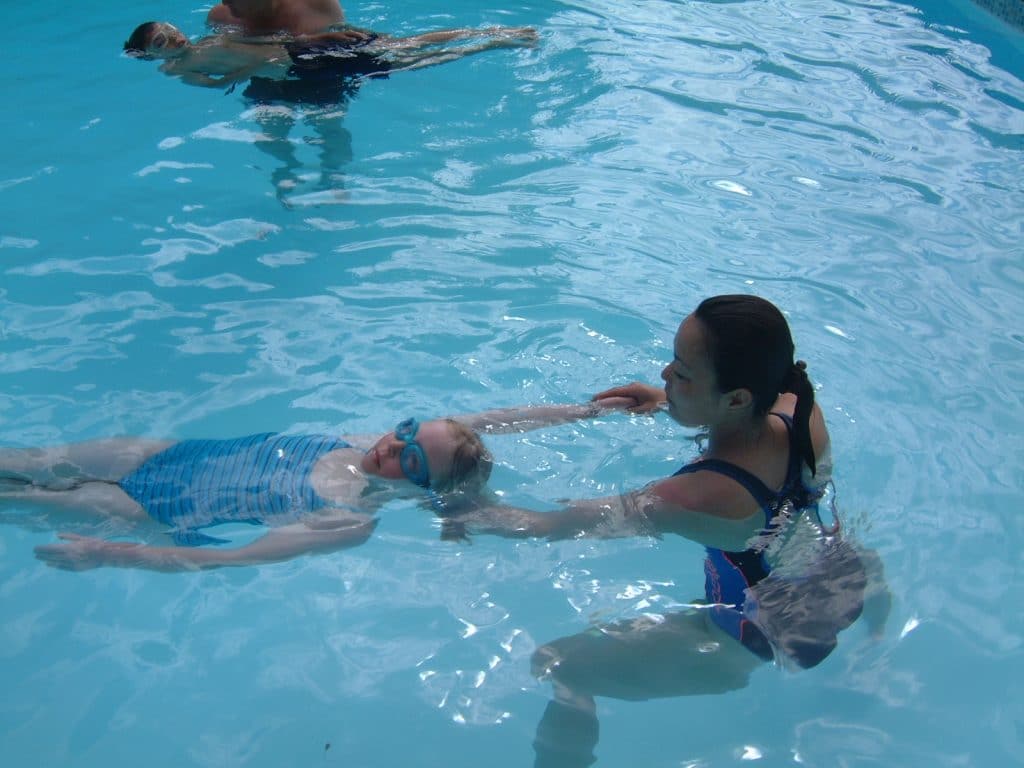On Teaching Children…
I don’t work with many children these days. But it’s good to keep your hand in. This week I gave five short lessons to Ollie, aged 7, a great little pupil.
He already loved the water so my job was easy. But watching what he was doing when he arrived on Monday made me think about what children’s swimming lessons are all about. What are our goals as parents and teachers?
Sometimes our kids know what they need better than we do. From lots of family time in the water, Ollie was already doing most of the important stuff – swimming to the bottom, playing underwater, jumping and diving in.
All kids develop in the water through this sort of play, if we give them the opportunity. We can pretty well leave them to it, with a bit of guidance here and there. ‘Top of your head in first, don’t look at the water’ stopped Ollie belly-flopping, for example. Throwing things to the bottom for kids to go and collect is a helpful but easy job for parents.
But when it comes to swimming from one end of the pool to the other, when children are ready and want our help, we need to engage both our brain and theirs. Otherwise the enjoyment of the water they’ve learned through play gets lost as they struggle for propulsion and gasp for breath.
So as I watched Ollie playing before I started working with him, I thought, he’s a fish, what does he need from me? Then I saw at his front crawl and thought, I better do something about that.
And I wondered about what had been happening in his lessons at school. Because he seemed to have no clear idea about what to do in front crawl, no guiding thoughts. And yet he’d been doing a fair amount of it. What he showed me on Monday was a version of crawl he’d been allowed to practise.
I got him thinking about gliding, rotating, using his easy ability to do 360 rotations, breathing more gently, doing fewer strokes. But I didn’t do much with him.
Limited ambition on my part helped make him a happy and relaxed pupil. It would have been no use trying to turn him into Michael Phelps. We don’t want to put children under too much pressure and force them to do things they aren’t ready to do. I just wanted to get him going in the right direction.
But as parents and teachers, we do need to do that.


